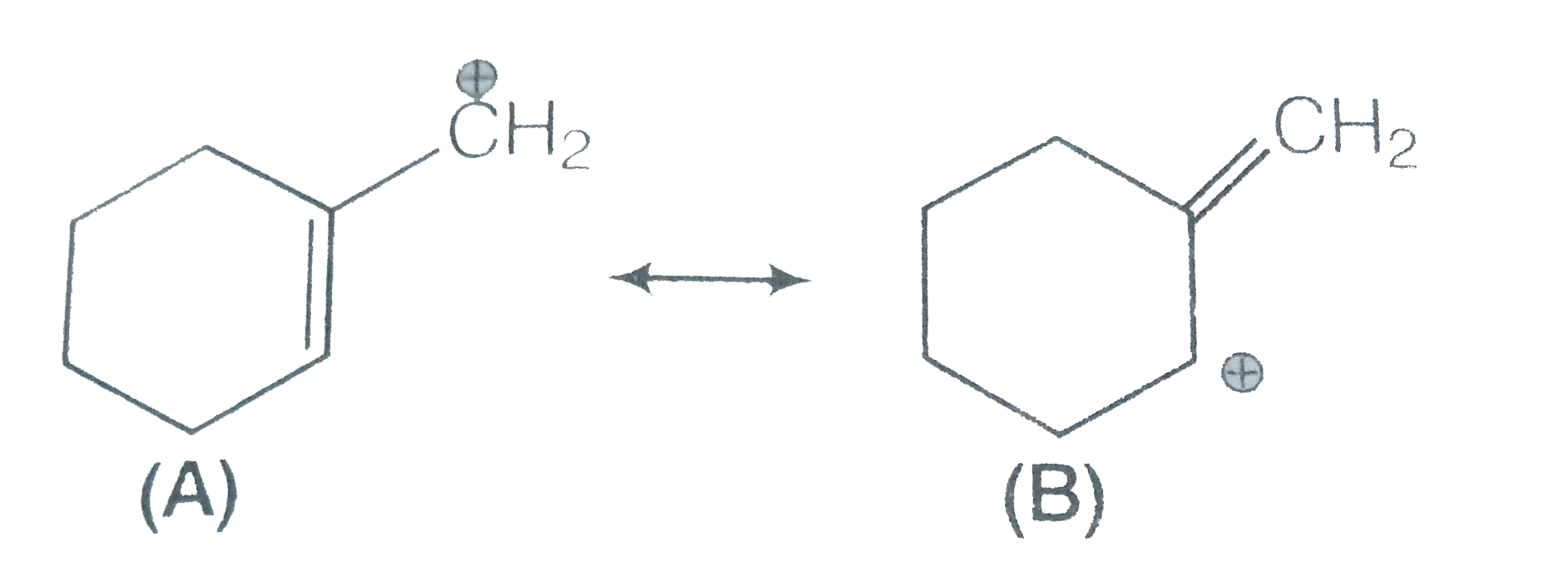stability of carbocations depends on
Step-by-Step Solution:
1. Understanding Carbocations:
- A carbocation is a positively charged carbon atom that has only six electrons in its valence shell, making it electron-deficient and unstable.
2. Factors Affecting Stability:
- The stability of carbocations is influenced by several factors, which include:
- Adjacent Multiple Bonds: The presence of adjacent pi bonds (like double or triple bonds) allows for resonance stabilization. The positive charge can be delocalized over the pi system, which stabilizes the carbocation.
- Lone Pairs: Lone pairs on adjacent atoms can also stabilize a carbocation through resonance. The lone pair can be donated to the empty p-orbital of the carbocation, helping to delocalize the positive charge.
- Substituents on the Carbocation: The number of alkyl groups attached to the positively charged carbon also plays a crucial role. More alkyl groups can donate electron density through hyperconjugation, which stabilizes the positive charge.
3. Conclusion:
- Therefore, the stability of carbocations depends on the presence of adjacent multiple bonds, lone pairs, and the number of carbon atoms (substituents) attached to the carbocation. The more effectively the positive charge can be delocalized or stabilized, the more stable the carbocation will be.
- A carbocation is a positively charged carbon atom that has only six electrons in its valence shell, making it electron-deficient and unstable.
- The stability of carbocations is influenced by several factors, which include:
- Adjacent Multiple Bonds: The presence of adjacent pi bonds (like double or triple bonds) allows for resonance stabilization. The positive charge can be delocalized over the pi system, which stabilizes the carbocation.
- Lone Pairs: Lone pairs on adjacent atoms can also stabilize a carbocation through resonance. The lone pair can be donated to the empty p-orbital of the carbocation, helping to delocalize the positive charge.
- Substituents on the Carbocation: The number of alkyl groups attached to the positively charged carbon also plays a crucial role. More alkyl groups can donate electron density through hyperconjugation, which stabilizes the positive charge.
- Therefore, the stability of carbocations depends on the presence of adjacent multiple bonds, lone pairs, and the number of carbon atoms (substituents) attached to the carbocation. The more effectively the positive charge can be delocalized or stabilized, the more stable the carbocation will be.
Topper's Solved these Questions
Similar Questions
'Stability of carbocations depends upon the electron releasing inductive effect of groups adjacent to positively charged atom involvement of neighbouring groups in hyperconjugation and resonace''.
Write structure of various carbocations that can be obtained from 2-methylbutane. Arrange these carbocations in order of increasing stability
View Solution'Stability of carbocations depends upon the electron releasing inductive effect of groups adjacent to positively charged atom involvement of neighbouring groups in hyperconjugation and resonace''.
Which of the following ions is more stable ? Use resonance of explain your answer.

View Solution
Knowledge Check
Assertion: The order of stability of carbocations is 3∘>2∘>1∘
Reason: Carbon atom in carbocation is in sp3 state of hybridisation.AIf both assertion and reason are true and reason is the correct explanation of assertionBIf both assertion and reason are true but reason is not the correct explanation of assertionCIf assertion is true but reason is false.DIf both assertion and reason are false.Taking into account the stability of various carbocations and, as well as the rules governing mechanisms of carbocation rearrangements, which reaction is most likely to occur during the given reaction ?
 A
A B
B C
C DNone
DNoneStability of ecosystem depends upon
APrimary productivityBInterchange between producers and consumersCNumber of producersDNumber of consumers
'Stability of carbocations depends upon the electron releasing inductive effect of groups adjacent to positively charged atom involvement of neighbouring groups in hyperconjugation and resonace''.
The structure of triphenylmethyl cation is given below. This is very stable and some of its salts can be stored for months. Explain the cause of high stability of this cation

View Solution'Stability of carbocations depends upon the electron releasing inductive effect of groups adjacent to positively charged atom involvement of neighbouring groups in hyperconjugation and resonace''.
Draw the possible resonance structures for CH3−..O..−+CH2 and predict which of the structures is more stable. Give reason for your answer.
View SolutionAssertion (A): SN1 reaction is carried out in the presence of a plar protic solvent.
Reason (R): A polar protic solvent increases the stability of carbocation due to solvation.
View SolutionArrange stability of given carbocations in decreasing order

View Solution"Stability of a community depends on its species richness." Write how did David Tilman show this experimentally.
View Solution
